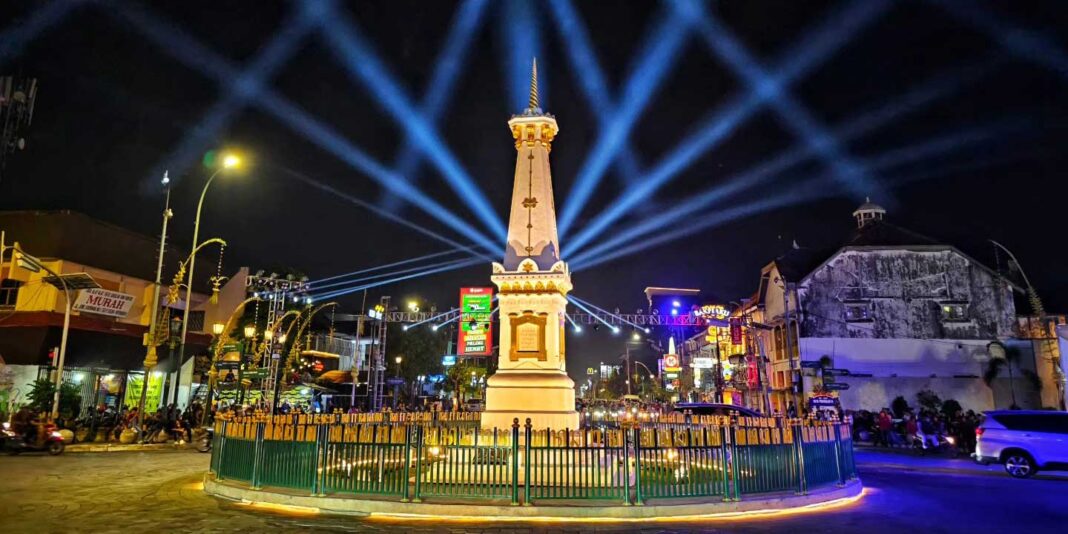The Yogyakarta Monument is a significant symbol of the city, representing its unique characteristics. Situated at the intersection of Jl. Mangkubumi, Jl. Jendral Sudirman, Jl. A.M Sangaji, and Jl. Dipenogoro, it holds historical importance and is considered one of the main icons of Yogyakarta.
Built in 1755 by Hamengkubuwono I, the founder of the Yogyakarta Palace, this monument holds great symbolic value. It is believed to connect the southern sea, the Jogja Palace, and Mount Merapi, forming a magical line. The Sultan used this monument as a reference point while meditating, facing Mount Merapi.
Originally, the monument represented the spirit of unity among the people and rulers in their fight against colonialism. Its unique design, with a cylindrical pillar and a round top, reflects this unity. It was named the Golong-Gilig Monument, symbolizing the concept of golong gilig, or unity. Initially, the monument stood at a height of 25 meters, with a tapered cylindrical shape and a circular base.
The Yogyakarta Monument stands as a historical icon, representing the rich heritage and cultural significance of the city.
However, on June 10, 1867, Tugu Jogja underwent a significant transformation due to an earthquake, resulting in its collapse. By 1889, Tugu Jogja had undergone a complete renovation by the Dutch government. During this time, the monument was reconstructed in a square shape, with each side adorned with inscriptions that acknowledged those involved in the restoration. The top of the monument was no longer round, but instead took on the form of a pointed cone. Additionally, its height was reduced to a mere 15 meters. Consequently, the Jogja Monument came to be known as the White Pal Monument, as part of a failed Dutch strategy to divide the people and the king, ultimately unsuccessful in its endeavor.

